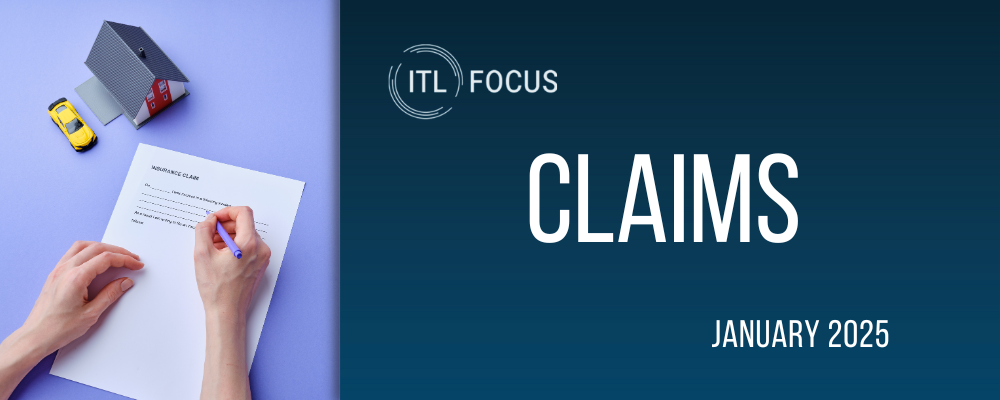In the U.S., one in four homeowners are unprepared for the costs of extreme weather events, and nearly half (47%) of Americans view homeownership as riskier with the increase in severe weather events. 69% of consumers are concerned about property damage in high-risk areas.
However, insurance carriers are also finding themselves overwhelmed with mounting catastrophe-related losses, which topped $15 billion in 2023.
Carriers are turning to emerging technology to help model and mitigate risks, and while these tools are crucial for shortening claims cycles, they don't solve the underlying problem facing the industry: a lack of property resiliency.
Property resilience refers to the ability for a physical property to withstand, adapt to or recover from outside disruptions, like extreme weather events. To keep policyholders insured in high-risk areas, carriers must bake resilience incentives into their policies to address policy gaps and high premiums, as well as work with restoration professionals to ensure the right materials are used to rebuild and future-proof homes against extreme weather.
See also: Climate and Catastrophe Risk Strategies
Current Limitations of Property Insurance
Today's property insurance model is reactive, focused on reimbursing losses and repairing damages over providing incentives to policyholders and contractors to focus on proactive measures. Such measures include strategies such as carriers subsidizing annual property assessments and contractors using climate-resistant materials, such as using flood damage-resistant materials in areas prone to hurricanes to decrease frequent restoration.
Shifting toward a more resilient model requires insurers to rethink how they are protecting homeowners in high-risk areas, specifically regions where they may be underestimating certain risk. Current risk models used by carriers are based on historical data, and extreme weather events are only increasing, with the U.S. experiencing 28 unique billion-dollar weather and climate disasters in 2023 alone and surpassing 2020's record number of disasters. Due to these significant increases, outdated models no longer work, leaving insurers unprepared for the sudden increase in frequency and intensity of extreme weather events.
Additionally, current pricing models may not factor in risk adjustment to react to climate change, creating a gap in insurance that many homeowners cannot afford. Policyholders in high-risk areas also face a lack of options when it comes to insurance, as the rise of extreme weather events has resulted in reduced or even denial of coverage in certain regions. Limited coverage options leave homeowners vulnerable to climate-related risks, and with the majority of homeowners unable to relocate to more insurable regions, high-risk areas face a new insurance crisis with each event.
Introducing Resiliency into Insurance Policies
The concept of resilience in the insurance industry has become a focal point as policyholders are facing increased external disturbances, such as flooding and hurricanes. Resilient properties are designed to keep policyholders safe, minimize damages and rebound quickly. The first step toward resiliency often includes a property resilience assessment (PRA) that allows carriers to work with inspectors to identify hazards and address them.
Addressing the lack of resilience in current policies requires carriers to focus on a three-fold approach:
- Expanding coverage and including PRAs in high-risk areas: By expanding coverage to include different risk areas without raising premiums, carriers can ensure homeowners are offered all protections. For example, in Florida, where the majority of homeowners have hurricane policies, individuals may not have flood insurance despite flooding becoming a rising risk. Providing flood coverage ensures protection and opportunities to future-proof properties.
- Encouraging resiliency throughout the entire insurance lifecycle: Carriers must promote resilience and offer homeowners incentives to take preventive measures. Consider including PRAs in policies, allowing homeowners to review vulnerabilities on the property and address them ahead of weather events.
- Adopting new technologies to accelerate the claims cycle: Carriers can make a shift toward resilience and invest in predictive analytics and update their risk models to better predict weather events. Leveraging emerging technologies, like artificial intelligence, can help predict risk and forecast costs ahead of storms, heat waves, etc.
See also: What Trump 2.0 Means for Climate Initiatives
Technology-Enabled Strategies to Drive Resilience
Leveraging technology enables carriers to work more effectively with inspectors, adjusters and contractors at each step of the way. Trust between restoration companies and insurance carriers is often fragile, and this can only be solved by a trusted third-party solution that provides accurate measurements and handles claims processes automatically.
Carriers can partner with PRA inspectors to leverage immersive imagery technology that documents a property assessment, showing what areas of the property may need climate-proofing and allowing carriers to make the distinction on how to reimburse policyholders for updates. Contractors can also work with carriers to explain why these renovations should be made before potential catastrophes hit, saving all parties money.
Carriers can also use immersive imagery when working with contractors to identify a single source of visual truth for the adjustment process, helping to build trust. When both stakeholders reference the same trusted technology, they can reach the same decision faster and shorten claim cycles. By treating a claim like a forensic investigation and technology like the tools to examine the property, insurers can work with contractors to identify areas where they can build back with stronger materials to avoid future damage.
The claims adjustment process is a large part of property insurance and is often where bottlenecks occur, slowing restoration timelines. For insurers, the largest cost savings come from improving the claims management cycle. By speeding up claim times, technology can provide enormous return on investment.
A More Resilient Industry
Catastrophe-related costs continue to plague carriers, contractors and homeowners alike, and as extreme weather events increase, the insurance industry has the opportunity to move forward with resilience. By expanding coverage, adopting new technologies and baking resilience into every step of the homeowner's journey, carriers can collaborate with all parties involved to make homes resistant to damages.


































